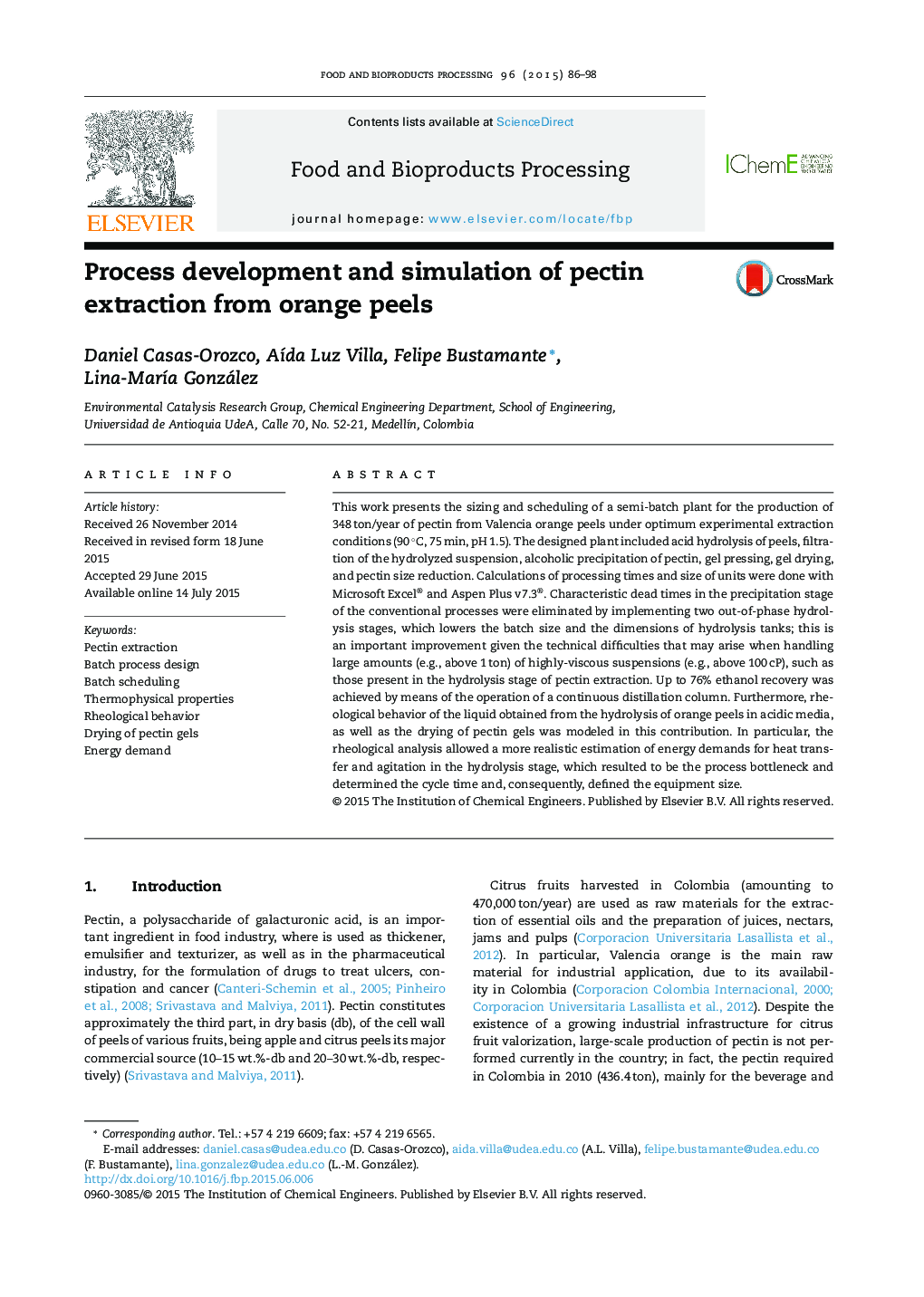| کد مقاله | کد نشریه | سال انتشار | مقاله انگلیسی | نسخه تمام متن |
|---|---|---|---|---|
| 18824 | 43035 | 2015 | 13 صفحه PDF | دانلود رایگان |
• A semi-batch approach to the industrial production of pectin is presented.
• Dead times are eliminated by means of two out-of-phase hydrolysis stages.
• Aspects influencing scaling-up, processing time and energy consumption are discussed.
• Cycle time and equipment size are set by the hydrolysis stage.
• Up to 76% ethanol recovery is achieved by continuous distillation.
This work presents the sizing and scheduling of a semi-batch plant for the production of 348 ton/year of pectin from Valencia orange peels under optimum experimental extraction conditions (90 °C, 75 min, pH 1.5). The designed plant included acid hydrolysis of peels, filtration of the hydrolyzed suspension, alcoholic precipitation of pectin, gel pressing, gel drying, and pectin size reduction. Calculations of processing times and size of units were done with Microsoft Excel® and Aspen Plus v7.3®. Characteristic dead times in the precipitation stage of the conventional processes were eliminated by implementing two out-of-phase hydrolysis stages, which lowers the batch size and the dimensions of hydrolysis tanks; this is an important improvement given the technical difficulties that may arise when handling large amounts (e.g., above 1 ton) of highly-viscous suspensions (e.g., above 100 cP), such as those present in the hydrolysis stage of pectin extraction. Up to 76% ethanol recovery was achieved by means of the operation of a continuous distillation column. Furthermore, rheological behavior of the liquid obtained from the hydrolysis of orange peels in acidic media, as well as the drying of pectin gels was modeled in this contribution. In particular, the rheological analysis allowed a more realistic estimation of energy demands for heat transfer and agitation in the hydrolysis stage, which resulted to be the process bottleneck and determined the cycle time and, consequently, defined the equipment size.
Journal: Food and Bioproducts Processing - Volume 96, October 2015, Pages 86–98
